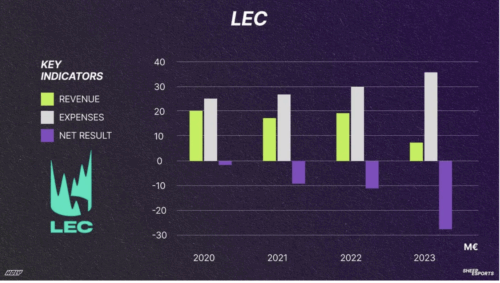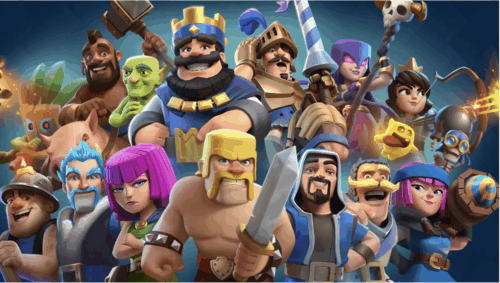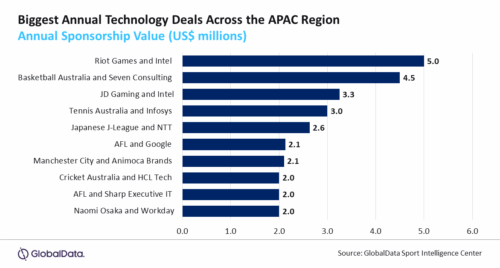

The first esports competition, the Intergalactic Spacewar Olympics was hosted by Stanford University in 1972, with the winner receiving a one-year Rolling Stones magazine subscription. Since then, esports has grown to become a billion-dollar industry with a dedicated and a blooming fanbase. While esports appears to have all the tools for success, companies are failing to turn a profit, with a notable example being League of Legends Champions of Korea, with the event recently recording record viewership numbers, but have churned significant losses amounting to US$29.6 million in the past 3 years.
Esports primarily makes money from sponsorship
s, advertising, and media rights with smaller revenue coming from ticket sales and merchandise. Nevertheless, this business model tends to lose millions of dollars every year. Despite the losses, esports has proven to be an effective way for game developers to draw attention to their games. Gaming through esports enables greater revenues through in-game cosmetics and fostering a loyal committed following socially. Further, the esports market is perceived to have a positive future, swaying sponsors and investors to support gaming through a shifting audience and the establishment of greater competitions and programs.
In the League of Legends European Championship (LEC), publisher Riot Games reportedly ran a €28.5m deficit in 2023 and an estimated €53m in cumulative losses from 2020 to 2023. Despite the multiple streams of revenue, the studio, travel, and broadcast production costs results in this tournament making a financial loss. So why do publishers insist on making a loss on esports? While making a loss, game publishers value the revenue from cosmetics and in-game purchases, as a byproduct of esports viewership.

Figure 1: LEC revenue and expenses from 2020 to 2023; making a cumulative loss
The loss that esports accumulates is paid off through its lucrative in-game cosmetic model. In Counter-Strike, every Valve Major championship comes with player and team stickers that players can purchase from other players through the Steam market, whereby Valve (the publisher) can charge a small percentage commission on every sale and purchase made.
Alternatively, players can purchase sticker capsule loot boxes priced around $1 paid directly to Valve. Publishers create in-game items featuring designs of teams or players. Because fans are more likely to purchase items featuring their favourite esports team designs, in-game sticker sales for Counter-Strike have become highly successful. In the case of the BLAST Paris Major, sticker revenue exceeded an impressive $110m. Besides an increase in the trade volume of team-related cosmetics, market prices also see an increase. During CS2 Majors, team-themed items saw a 15-50% rise in market prices, which helped to generate greater revenue through higher sale commissions. Beyond Counter-Strike and in games like Overwatch and Valorant, fans are exposed to what professional players use as cosmetics for their guns, characters, and more. Esports creates desirability in in-game cosmetics and players are influenced to purchase these cosmetics for a fixed price or through loot boxes, which contain a chance to unveil a skin they desire. In Valorant, Riot Games uses a similar business model for their Valorant Championship Tournament (VCT). In 2024, Riot released a “Champions 2024” skin collection paired with the “VCT 2024 Team Capsule”. With these cosmetics, Riot pledges a fixed percentage of revenue earned towards participating teams. A record $35m was distributed to participating teams which shows how esports can build desirability in viewers to purchase cosmetics related to their favourite teams or skins used by professionals.
The audience of esport is what makes it so captivating. By 2025, it is predicted that there will be over 640 million unique viewers worldwide, which is a tremendous increase from a few years ago. The majority of this audience is young, tech-savvy, and involved; looking for more than just entertainment but for a sense of belonging and identity. This makes it possible for teams, game developers, and brands to cultivate enduring loyalty through fan-focused projects, interactive content, and streaming experiences.
An example of this is Supercell’s mobile strategy game Clash Royale. Supercell used its Clash Royale League (CRL) and the brand power of massive streamers such as Jynxzi to foster community involvement and nostalgia for former players. Clever social media marketing, seasonal competitive formats, and CRL events provide players with specific objectives as well as ways to follow, watch, and participate. With its frequent updates, plus seasonal promotions have helped spike engagement and revenue. Clash Royale generated over USD 25-30 million in monthly revenue in high months in 2025, showing how well-timed events and content can reactivate lapsed or casual players.

Figure 2: The Clash Royale League is an example of esports as an marketing tool
Currently, the esports market is valued at over $1.6 billion. At the end of 2025, revenue is expected to grow to $1.86 billion, amounting to a compounding growth rate of 13.4% annually from 2020. Esports audiences and viewership have risen to record highs, with the prospect of further expansion into new genres of games targeting developing audiences such as women. A study conducted by Niko Partners determined that women’s gaming makes up 37% of gamers in Asia and is growing by 11% annually, at a rate double that of men, presenting new market opportunities for game developers to generate revenue.
Moreover, advertisers and sponsors play an important role in promoting the growth of the esports market, contributing to 60% of the revenue in the industry in 2022. Furthermore, with a predominantly younger audience allured to esports competitions, with 73% of viewers younger than 35, this can provide opportunities for investment for sponsors looking to capitalise in a high-growth industry with a younger audience demographic and a growing female audience. A recent case in point of a company benefiting from the promotion of esports was Intel. The multinational technology company has sponsored many esports competitions, such as Intel Extreme Masters, as well as University esports competitions. Intel is also a main partner of League of Legends and Valorant developer Riot Games and Chinese esports League of Legends team JD Gaming, with such deals ranked among the largest annual technology deals in the Asia-Pacific region in 2024, with deals worth $5 million and $3.3 million respectively.

Figure 3: Biggest Annual Tech Deals in APEC. Source: GlobalData
Similar to the global landscape, Australia’s esport market is expected to expand swiftly, with market revenue forecasted to rise from $133 million in 2024 to $171.1 million in 2028. This rising growth rate stems from the investment in esports pathways for individuals through university and high school extracurricular programs and competitions. For example, Westbourne Grammar School in Victoria has an esports program complemented by an Esports studio on campus with resources for students to pursue competitive gaming. The transition towards esports in a global setting is emphasised through the creation of the Olympic Esports Games in July 2024, with the first edition held in 2027 in Riyadh, Saudi Arabia. This presents as a promising opportunity for continued esports growth and marketing, helping bring popularity to gaming and creating additional revenues for games.
In conclusion, esports serves as an important component for any game developer looking to create additional revenue streams by cultivating a passionate, die-hard playerbase. Esports also provide a social element for viewers looking to emulate their favourite players and creators in game, motivating microtransaction purchases and spending into the game. The future landscape appears fruitful for developers, esports teams and investors with the prospect of high-growth and the creation of new global events such as the Olympic Esports Games and the Esports World Cup.
The CAINZ Digest is published by CAINZ, a student society affiliated with the Faculty of Business at the University of Melbourne. Opinions published are not necessarily those of the publishers, printers or editors. CAINZ and the University of Melbourne do not accept any responsibility for the accuracy of information contained in the publication.